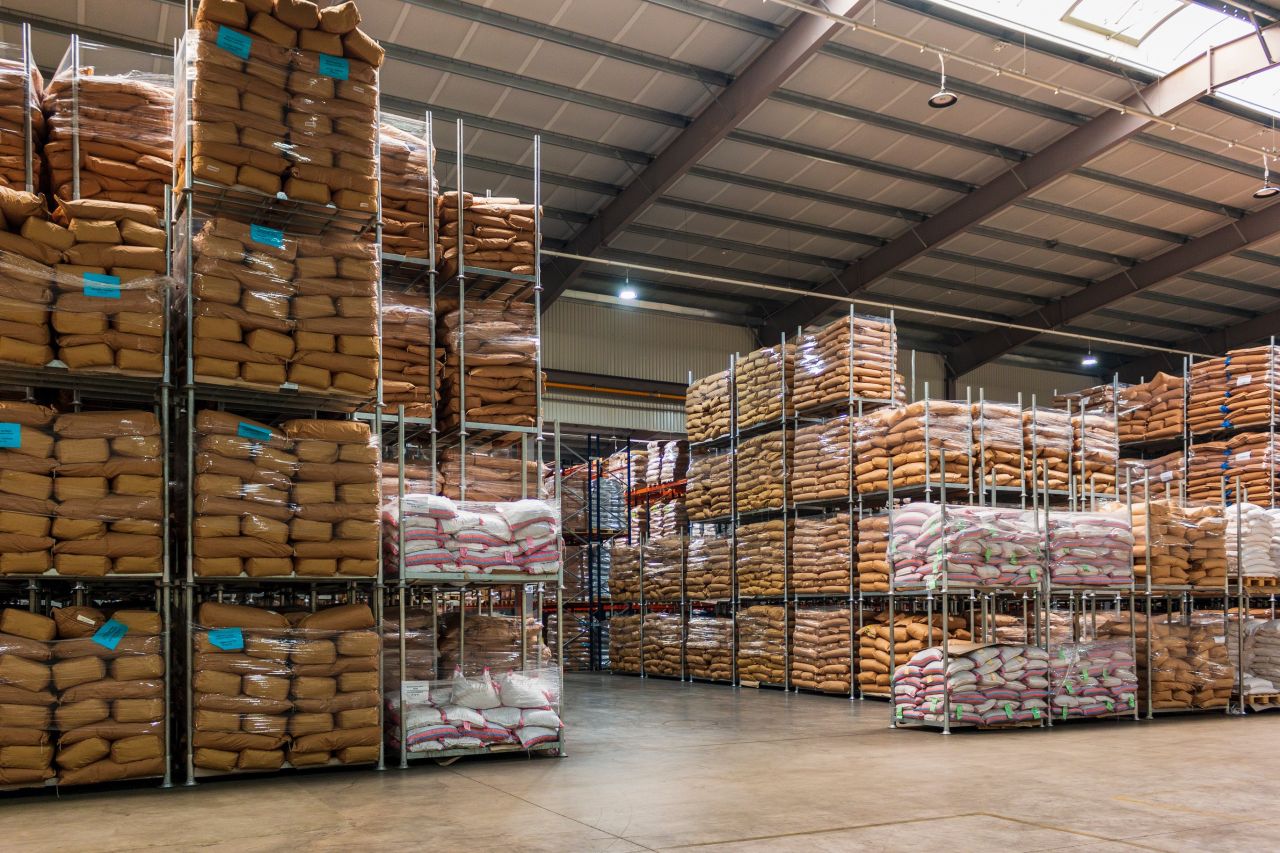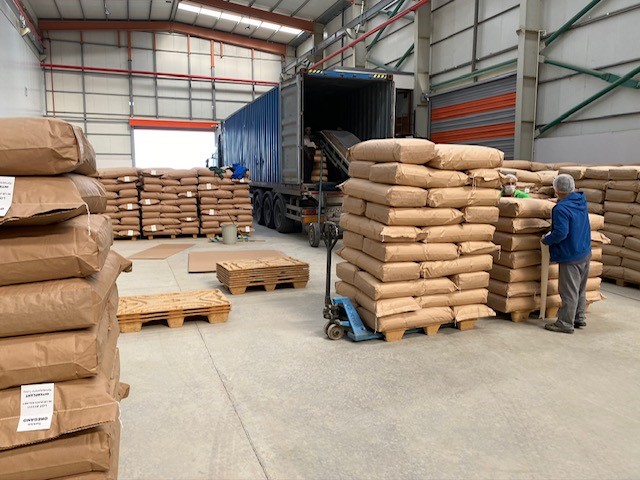

Warehouse Storing and Preserving
The purpose of this informationis to provide an overview of the warehouse facility designed for storing herbs in large quantities and preserving them until the date of export or re-operation on production lines. The warehouse plays a crucial role in maintaining the quality, freshness, and integrity of the herbs throughout the storage period. This report will outline the key features, processes, and considerations involved in effectively managing the warehouse for herb storage.
Warehouse Features
Size and CapacityThe warehouse should be spacious enough to accommodate large quantities of herbs. The size and capacity should be determined based on the expected volume of herbs to be stored and the duration of storage.
Temperature and Humidity ControlMaintaining appropriate temperature and humidity levels is essential for preserving the quality of herbs. The warehouse should be equipped with climate control systems, such as HVAC (Heating, Ventilation, and Air Conditioning) units, to regulate temperature and humidity within optimal ranges.
VentilationProper air circulation is crucial to prevent the build-up of moisture and the growth of mold or fungi. The warehouse should have adequate ventilation systems to ensure a constant flow of fresh air.
Lighting
Sufficient lighting is necessary for the safe and efficient handling of herbs. Both natural and artificial lighting should be considered to create a well-lit environment within the warehouse.
Security MeasuresTo protect the stored herbs from theft and unauthorized access, the warehouse should implement robust security measures. These may include surveillance cameras, access control systems, and security personnel.
Storage and Preservation Processes
Sorting and CategorizationUpon arrival, herbs should be sorted and categorized based on their type, quality, and destination. Proper labeling and documentation should be maintained to ensure easy identification and traceability.
PackagingHerbs should be appropriately packaged to prevent damage during handling and storage. Packaging materials should be durable, moisture-resistant, and capable of preserving the freshness of the herbs.
Inventory ManagementAn efficient inventory management system should be implemented to track the quantities, locations, and expiration dates of the stored herbs. This system should enable real-time monitoring and facilitate timely replenishment of stock.
Pest ControlImplementing effective pest control measures is essential to prevent infestation and damage to the stored herbs. Regular inspections, pest monitoring, and the use of appropriate pest control methods should be employed.
Rotation and First-In-First-Out (FIFO) PrincipleTo ensure the freshness and quality of herbs, a rotation system based on the FIFO principle should be followed. Older stock should be used or exported first to minimize waste and product deterioration.
Quality Assurance and Compliance
Quality Checks
Regular quality checks should be conducted to ensure that the herbs meet the required standards. This may include visual inspections, sensory evaluations, and laboratory testing to verify the absence of contaminants and maintain the desired quality attributes.
Hygiene PracticesStrict hygiene practices should be enforced within the warehouse, including personal hygiene of staff, cleanliness of storage areas, and proper sanitation procedures. This helps prevent cross-contamination and ensures the integrity of the stored herbs.
Compliance with RegulationsThe warehouse operations should comply with relevant local and international regulations governing the storage, handling, and export of herbs. This includes adherence to food safety standards, documentation requirements, and compliance with import/export regulations.
Summary
Efficient management of a warehouse for storing herbs in large quantities is critical for preserving their quality until the date of export or re-operation on production lines. By maintaining appropriate temperature and humidity levels, implementing robust security measures, following proper storage and preservation processes, and ensuring compliance with regulations, the warehouse can effectively safeguard the freshness, integrity, and safety of the herbs. Adhering to quality assurance practices and maintaining strict hygiene standards further contribute to delivering high-quality herbs to customers and meeting the demands of the export market or production operations.
